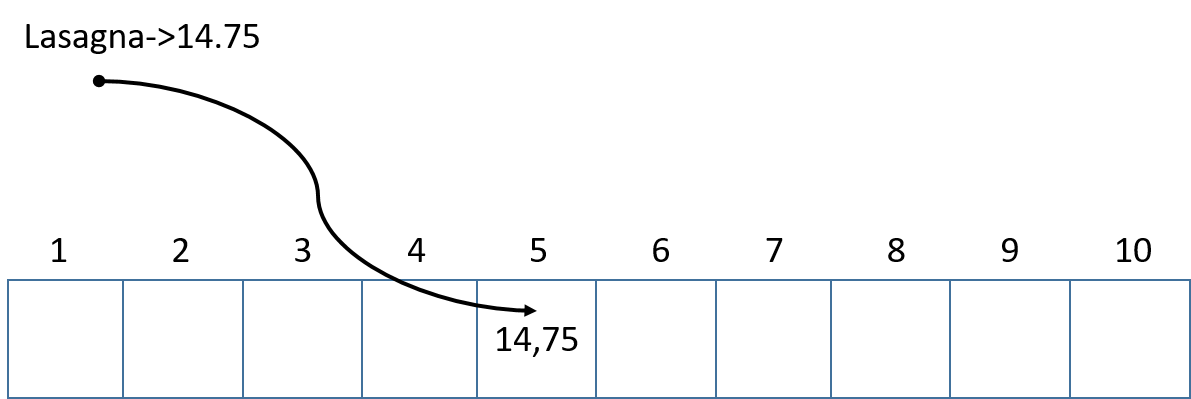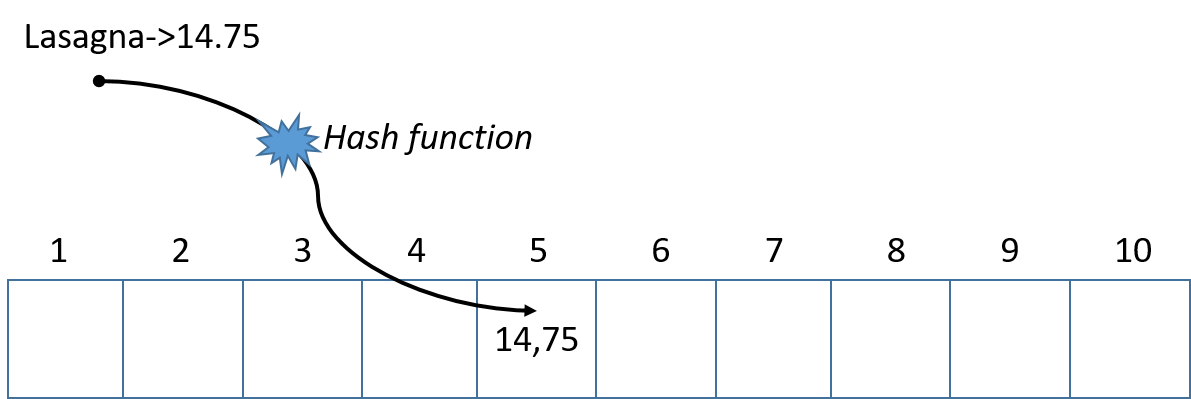Hash tables
Data Structures and Algorithms in Python

Miriam Antona
Software engineer
Definition
- Stores a collection of items
Key-value pairs
lasagna: 14.75 moussaka: 21.15 sushi: 16.05Almost every programming language has a built-in hash table:
- hashes, hash maps, dictionaries, associative arrays
- Python: dictionaries
Structure
- Each position: slot/bucket

Hash functions

Hash functions

- Every time a hash function is applied
- must return the same value for the same input
Lookups

- Find "lasagna"
- hash("lasagna") -> 5
Lookups

- Find "lasagna"
- hash("lasagna") -> 5
- return 14,75
- $O(1)$
Collisions
- Hash functions can return same output for different inputs
- hash("moussaka") -> 1

- insert: moussaka -> 21,15
- Collision!
- must be resolved
- several techniques
Python dictionary
- Empty dictionary
my_empty_dictionary = {}
- Dictionary with items
my_menu = {
'lasagna': 14.75,
'moussaka': 21.15,
'sushi': 16.05
}
Python dictionary - get
print(my_menu['sushi'])
16.05
print(my_menu['paella'])
Traceback (most recent call last):
File "<stdin>", line 1, in <module>
KeyError: 'paella'
print(my_menu.get('paella'))
None
Python dictionary - items, keys & values
- Get items
print(my_menu.items())
dict_items([('lasanga', 14.75),
('moussaka', 21.15),
('sushi', 16.05)])
- Get keys
print(my_menu.keys())
dict_keys(['lasanga', 'moussaka', 'sushi'])
- Get values
print(my_menu.values())
dict_values([14.75, 21.15, 16.05])
Python dictionary - insert
my_menu['samosas'] = 13print(my_menu.items())
dict_items([('lasanga', 14.75), ('moussaka', 21.15), ('sushi', 16.05), ('samosas', 13)])
Python dictionary - modify
print(my_menu.get('sushi'))
16.05
my_menu['sushi'] = 20print(my_menu.get('sushi'))
20
Python dictionary - remove
- Deletes a dictionary completely
del my_menu
- Removes a key-value pair
del my_menu["sushi"]
- Empties a dictionary
my_menu.clear()
Python dictionary - iterate
for key, value in my_menu.items():
print(f"\nkey: {key}")
print(f"value: {value}")
key: lasagna
value: 14.75
key: moussaka
value: 21.15
key: sushi
value: 16.05
Python dictionary - iterate
for dish in my_menu:
print(dish)
lasagna
moussaka
sushi
for prices in my_menu.values():
print(prices)
14.75
21.15
16.05
Python dictionary - nested dictionaries
- Nested dictionary
my_menu = {
'sushi' : {
'price' : 19.25,
'best_served' : 'cold'
},
'paella' : {
'price' : 15,
'best_served' : 'hot'
}
}
Let's practice!
Data Structures and Algorithms in Python

